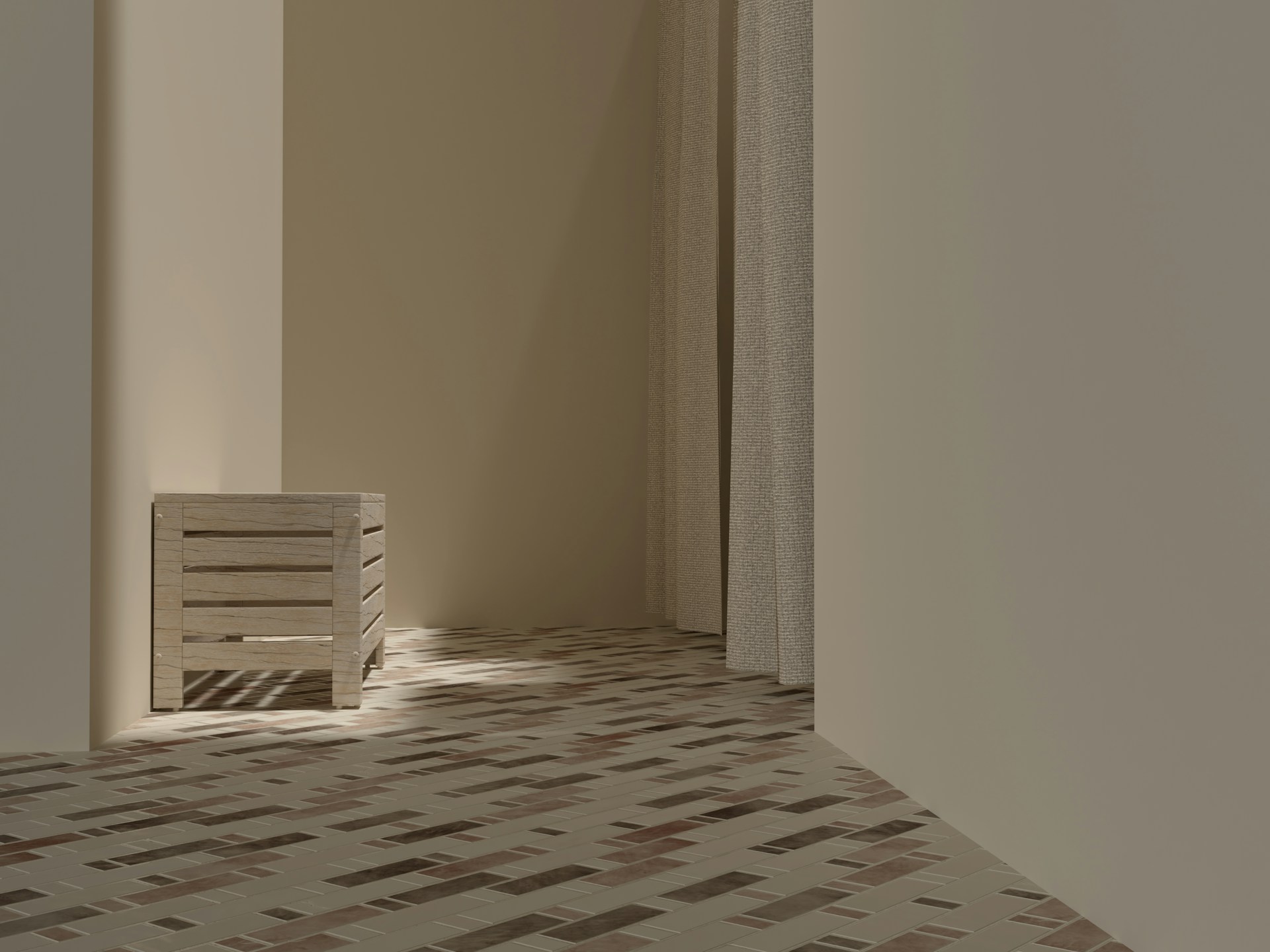Small spaces can feel challenging to decorate, but indoor tiles offer a versatile and stylish solution. Using tiles creatively can make even the tiniest rooms look spacious and inviting. With the right tiling techniques, you can add depth, character, and functionality to your small space.
Vertical tiling is a fantastic way to make rooms appear taller. It draws the eye upward, creating the illusion of extra height. This method can be particularly effective in bathrooms and kitchens where wall space is limited. Additionally, using colourful or patterned tiles adds a sense of depth and style, making the area feel larger and more vibrant.
Mixing textures and finishes can also transform small areas. Glossy and matte tiles, when combined thoughtfully, catch the light differently and bring a room to life. By focusing on these elements, you can turn cramped quarters into charming, functional spaces that you’ll love. Let’s dive into some creative ways to use indoor tiles in your small spaces!
Maximising Space with Vertical Tiling
Benefits of Vertical Tiling
Vertical tiling can do wonders for small spaces. By arranging tiles vertically, you create an illusion of height, making the room feel taller and more spacious. This technique works best in narrow rooms like bathrooms and compact kitchens. Vertical tiles draw the eye upward, which helps to break up the cramped feel and adds a sense of openness.
Another benefit is the modern and clean look that vertical tiling offers. It gives a fresh appearance to the room, making it both stylish and functional. Vertical tiles are also practical because they are easier to clean and maintain, especially in areas that are prone to moisture.
Suitable Tile Types for Vertical Arrangements
Choosing the right type of tile is crucial for achieving the best results with vertical tiling. Here are some suitable options:
1. Subway Tiles: These classic tiles are perfect for vertical arrangements. They are rectangular and fit seamlessly in any design, offering a timeless look.
2. Linear Mosaic Tiles: These smaller tiles are arranged in strips and can add a detailed, textured look when placed vertically.
3. Large Format Tiles: Using larger tiles in a vertical layout can create a sleek and elegant appearance. They work well in showers and small wall sections.
4. Porcelain Tiles: Durable and available in various finishes, porcelain tiles are ideal for vertical tiling in areas like bathrooms and kitchens.
Creating Visual Depth With Patterns and Colours
Using Contrasting Colours for Depth
Contrasting colours can make a small space feel more dynamic and less confined. By choosing two or more contrasting colours, you can create visual depth that tricks the eye into seeing a larger space. For instance, pairing light and dark tiles can highlight specific areas and add dimension.
Incorporating bright colours into an otherwise neutral palette can also make a room pop. Light-coloured tiles reflect more light, making the area feel more open and airy. Darker tiles used sparingly can add a touch of sophistication and create focal points that draw attention away from the room’s size.
Patterned Tiles to Enhance Small Areas
Patterned tiles are a fantastic way to enhance the visual appeal of small spaces. They can add character and complexity without overwhelming the room. Here are some ideas:
1. Geometric Patterns: Geometric tiles, like hexagons or chevrons, can add a modern twist to a small area. They create interesting visuals and can make a room feel more structured and balanced.
2. Mosaic Tiles: These small, often colourful tiles can form intricate patterns that add a unique touch to tiny rooms. They are ideal for feature walls or backsplashes.
3. Floral and Organic Patterns: These tiles are great for adding a natural element to the space. They bring in a touch of the outdoors and make the room feel cosy and inviting.
By skilfully selecting patterns and colours, you can transform a small space into a vibrant and stylish area. The key is to use these elements to create depth and interest, making the room appear larger and more visually appealing.
Functional Uses of Tiles in Tiny Rooms
Tiling for Small Kitchen Backsplashes
A small kitchen can greatly benefit from a well-designed backsplash. Tiles are perfect for this purpose because they are easy to clean and can add a lot of personality to your kitchen. A backsplash can protect your walls from cooking splatters and spills while adding visual interest to the space.
Subway tiles are a popular choice for backsplashes. They offer a clean, classic look that works well in small kitchens. You can also use mosaic tiles to create a focal point behind the stove or sink. Consider using brightly coloured tiles to make the area pop, or go for a neutral shade to keep things simple and elegant. Small tiles in bold patterns can add character without overwhelming the room.
Smart Bathroom Tile Applications
In small bathrooms, every bit of space counts. Tiles can help make these tiny rooms functional and stylish. For instance, tiling your shower in a vertical pattern can make the bathroom look taller. Opt for light-coloured tiles to make the space look bigger and brighter.
Consider using large format tiles on the walls and floors. They have fewer grout lines, which makes the space look more continuous and less cluttered. Using the same tiles on both the floor and walls can also create a seamless look, making the room feel more spacious. If you want to add a bit of flair, use small, textured tiles as an accent in the shower or around the sink area.
Combining Textures and Finishes
Mixing Glossy and Matte Tiles
Combining different textures and finishes can create a unique and appealing look in small spaces. Glossy tiles reflect light, making the room feel bigger and brighter. They are great for areas that don’t get a lot of natural light, like bathrooms or small kitchens. On the other hand, matte tiles offer a subtle, sophisticated finish that can add depth and contrast.
One way to use both is to install glossy tiles on the walls and matte tiles on the floor. This combination can make the room feel more dynamic and visually interesting. For example, a glossy backsplash paired with matte floor tiles in the kitchen can create a balanced look.
Using Textured Tiles for Accents
Textured tiles can add a touch of luxury and style to any small space. They create visual interest and add a sense of depth. Use textured tiles sparingly to highlight certain areas, like an accent wall in the bathroom or a feature strip in the kitchen.
3D tiles are also a great option for adding dimension. You can use them on one wall to make a statement without overwhelming the room. Textured tiles made from materials like natural stone or wood can bring a touch of nature into your space, making it feel cosy and inviting.
Conclusion
Small spaces can be tricky to decorate, but with the right use of tiles, you can transform them beautifully. Vertical tiling, clever use of patterns and colours, functional applications in kitchens and bathrooms, and combining different textures and finishes can all make a massive difference. These techniques not only make small areas more practical but also more appealing and stylish.
Remember, it’s all about maximising what you have and making smart choices with your tiles. Ready to get started on your tiling project? Discover how DB Tiles and Bathrooms can help you find the perfect indoor tiles to make your space shine!



